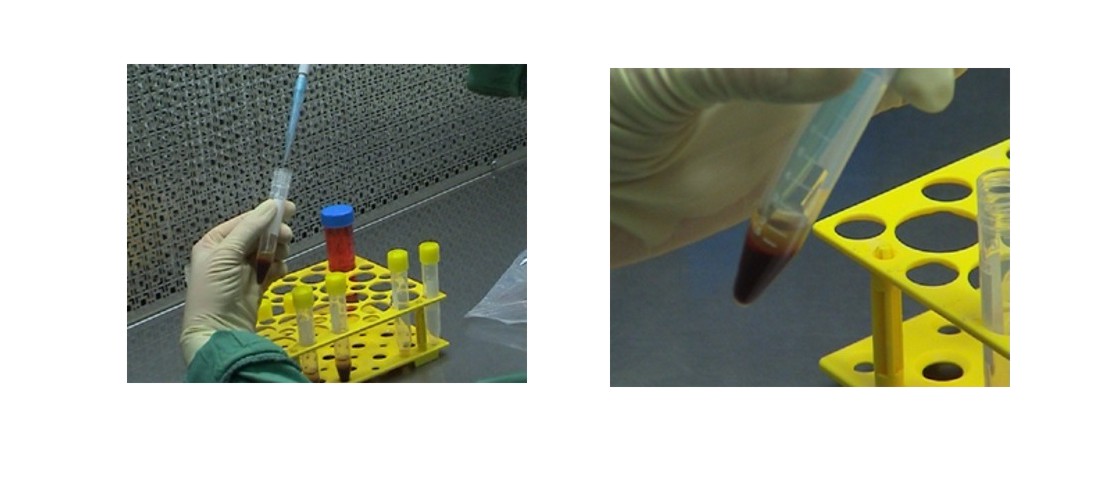For me, entering a new laboratory, with all that entails, once again highlights the shifting relationship between art and science and the motivation driving artists to engage in this field. The question ‘Why Art and Science’ is central to the interdisciplinary debate and my research in this area is constantly being updated – most recently in relation to my collaboration with Mirella, presented in 2018 at SPECTRA – https://spectra.org.au/ .
Embracing the spirit of ‘what if’, my practical laboratory work frequently involves adopting the role of a ‘human guinea pig’ and experimenting on my own cells – a methodology that contravenes the so-called objectivity of accepted laboratory practices and puts me at the centre of the process. My aim is to generate empathy between the interactive artwork, derived from the scientific data, and the viewer/participant.
Adams decants her washed and spun adult stem cells for laboratory culture @ 2002, the ‘machina carnis’ project – https://www.trishadams.tv/machina-carnis
These practical experimental processes have gone hand in hand with my more formal art/science research; beginning with the Natural Philosophers, the Lunar Men https://www.lunarsociety.org.uk/lunar-men-an-introduction/ and the subsequent evolution of ‘science’ as a discrete discipline. Significantly, the current debate relating to the two cultures of art and science was reintroduced by CP Snow in his landmark Rede lecture in 1959: https://www.age-of-the-sage.org/scientist/snow_two_cultures.html
The spirit of ‘what if’ permeated the outlook of both the Natural Philosophers and the Lunar Men. It is also a key methodology I have adopted in my art/science practice. The term came up during a discussion with one of my early collaborators: Dr V. Nurcombe, who outlined his opinion of my position as an artist in a scientific laboratory thus:
‘we set out to do something quite “other”, something more open-ended. Research with other scientists is usually extremely focused and conducted within tight parameters; it’s not about possibilities so much as progressively excluding as many possibilities as possible. Our work was conducted more in the spirit of “what if?” ’ (1)
For me, the term ‘what if’ epitomises the exploratory nature of contemporary art/science collaborations, evoking the open- ended explorations of both the Natural Philosophers and the Lunar Men. This approach opens the door for the hybrid collaborative outcomes generated when the scientist and the artist research together, merging their disciplinary knowledge in an innovative collaborative approach that will form the basis of this Synapse project and address the question posed by Stephen Wilson in his Art as Research paper:
Skeptics sometimes wonder what possible contribution artists can make to serious research and development. Artists can augment the research process in several ways. They can define new kinds of research questions, provide unorthodox interpretations of results, point out missed opportunities for development, explore and articulate wide ranging implications of the research, represent potential user perspectives, and help communicate research findings in effective and provocative ways. They can bring centuries of artistic experience to bear on the technological future. They often approach problems in ways quite different than those of scientists and engineers.
It is with this in mind that Mirella and I are embarking on our cross disciplinary project and developing a new type of hybrid collaboration along the way.
(1)Dr. V. Nurcombe, E-interview, Appendix V, Exegesis: The Implications for Artistic Expressions and Representations of Corporeality of the Experimental Techniques of Biomedical Engineering. Adams, P. L. (2005). https://experts.griffith.edu.au/publication/nba99cf577d4608f3df90767aa03f1b24Themplications
(2) http://userwww.sfsu.edu/swilson/papers/artist.researcher.html, p.4.
